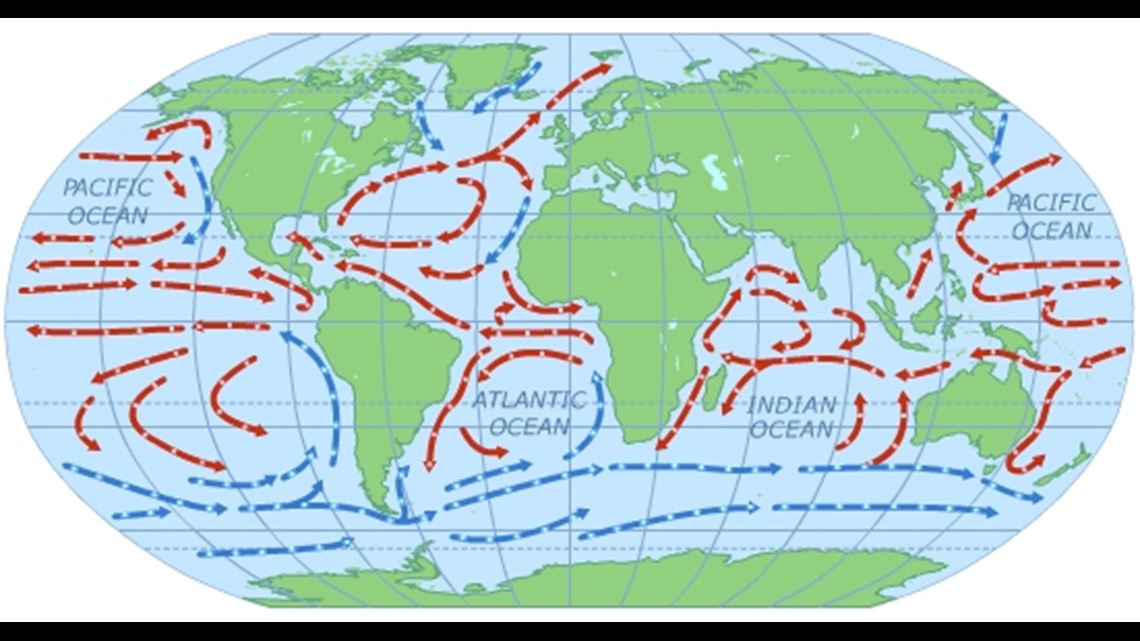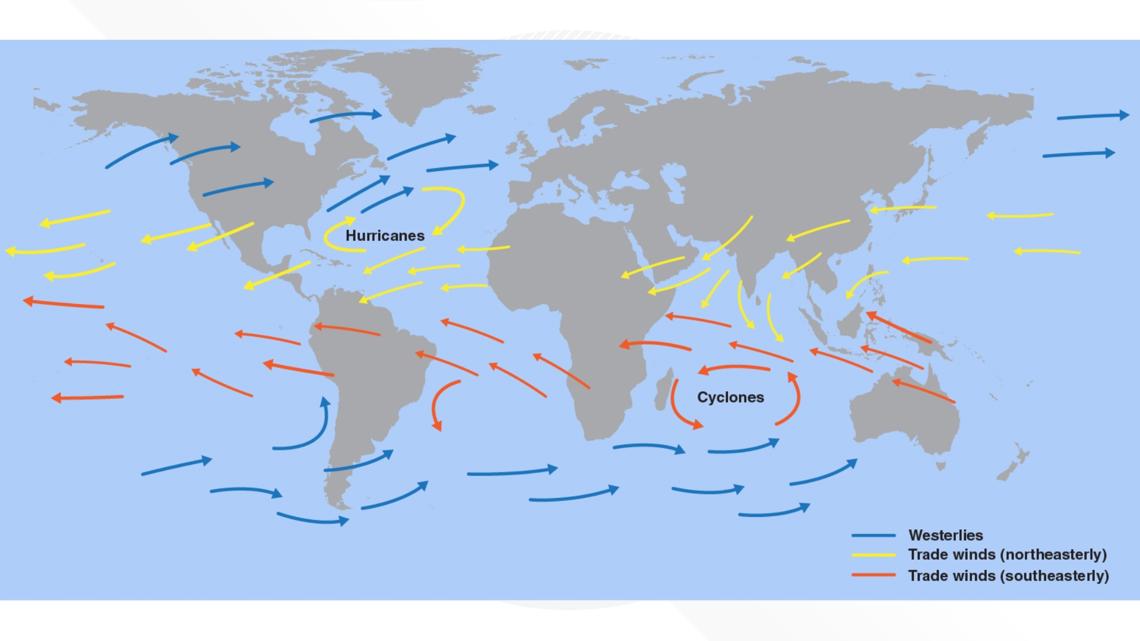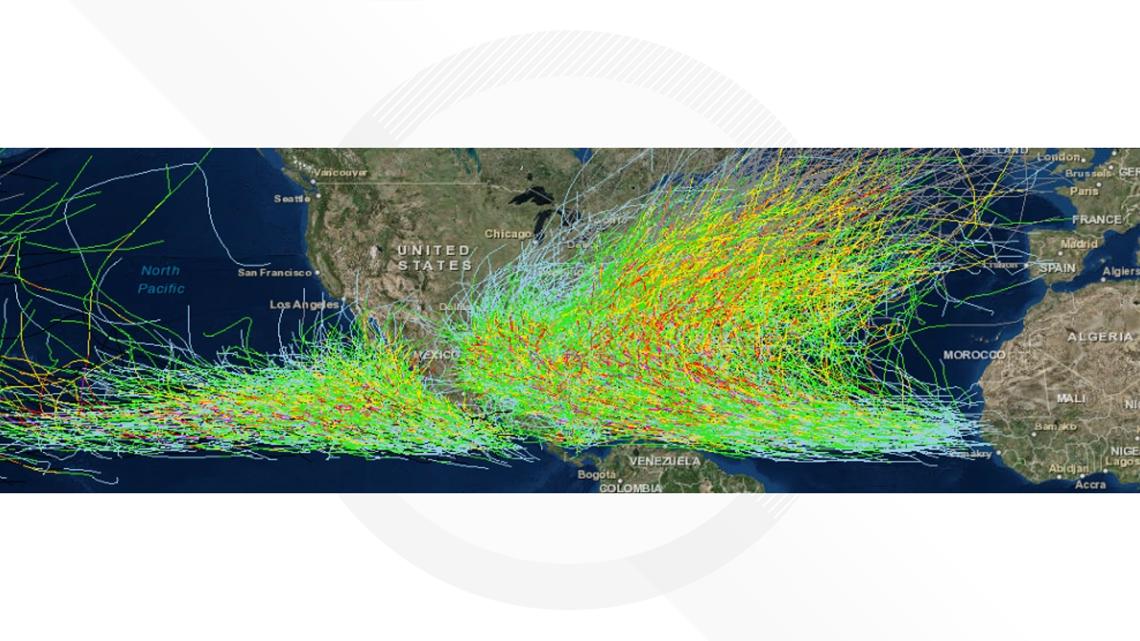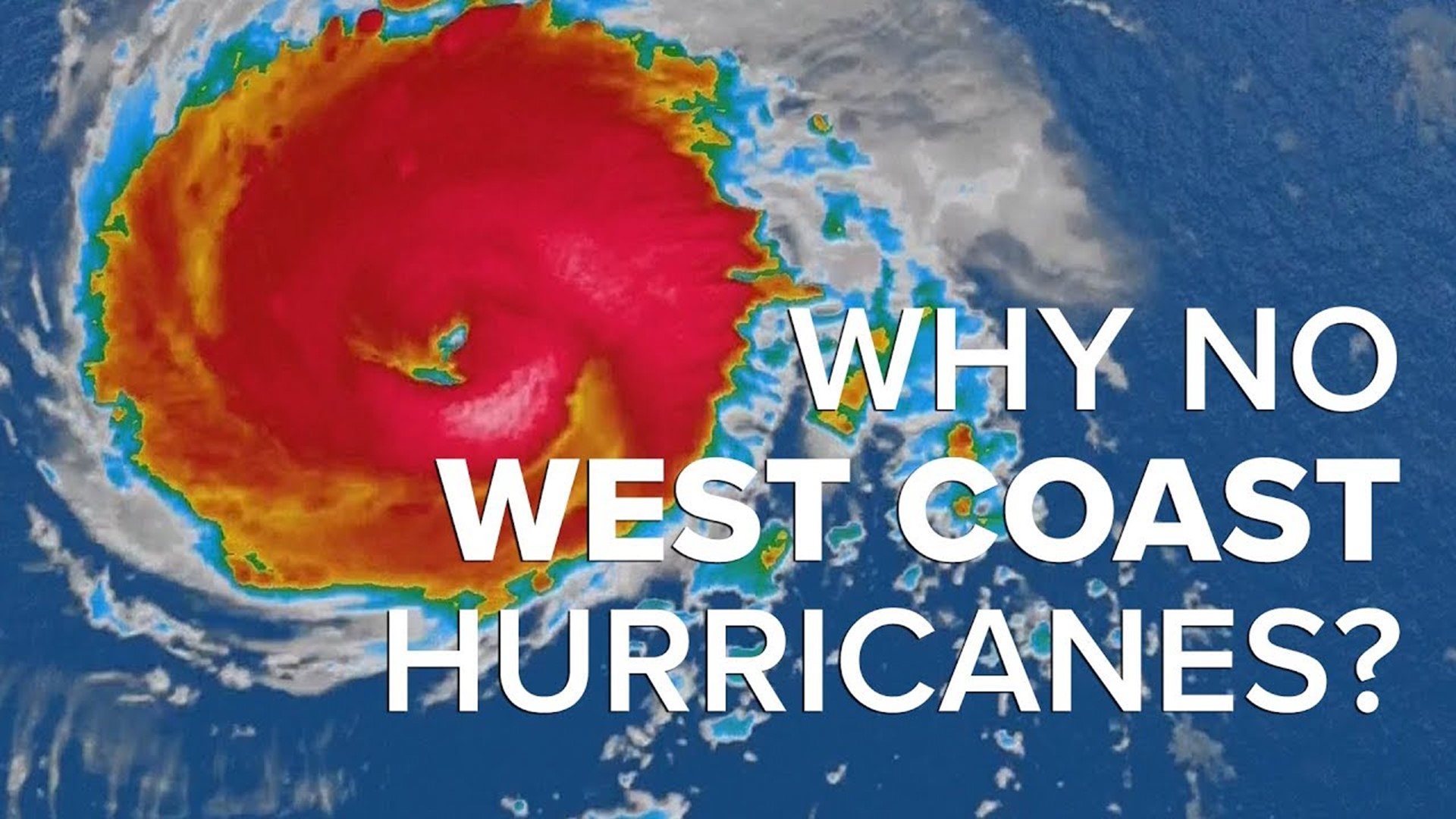SEATTLE — As major Hurricane Ian makes landfall in southwestern Florida as a strong Category 4 with maximum sustained winds of 155 mph, those along the U.S. West Coast may be wondering why the West Coast doesn't see hurricanes. In fact, it's one of the natural disasters the West Coast doesn't have to worry much about.
The two primary reasons the U.S. West Coast doesn't see hurricanes is because of the cold ocean temperatures and cold current, plus the direction of the trade winds.
Hurricanes need ocean temperatures to be warmer than 79 degrees. Warm ocean temperatures are the fuel or energy needed for the development and intensification of tropical storms and hurricanes. Hurricanes get the fuel they need from contact with the warm, tropical ocean waters.
If the water temperature is colder than 79 degrees, it's challenging and nearly impossible for hurricanes to develop or maintain tropical characteristics. While these ocean temperatures are common during hurricane season along the East Coast, the West Coast is much colder. Warm, equatorial waters are transported north to higher latitudes via the Gulf Stream but along the West Coast, ocean temperatures are significantly colder as a cold current steers colder water from higher latitudes toward equatorial regions. See the current ocean temperatures here.


This is a big reason hurricanes don't impact the West Coast. The only region of the U.S. West Coast that sees ocean temperatures even crack the 70s is the immediate coastal areas of southern California. Farther north along the coast from central California to Washington, water temperatures are significantly colder in the 60s and 50s.
Another reason hurricanes do not hit the West Coast is because of the wind steering patterns. The trade winds located from around latitude 5 degrees north to 30 degrees north help steer hurricanes toward the East Coast and away from the West Coast, so hurricanes that form in the eastern Pacific, typically off the central Mexico coast, tend to move west-northwest away from the U.S. West Coast. While hurricanes do tend to move poleward eventually, by the time hurricanes in the eastern Pacific start to make that northward jump, they're far away from the U.S. West Coast, quickly encountering colder water and then weakening.


Sometimes Eastern Pacific hurricanes do make a more rapid poleward or northward movement from central Mexico. Still, when they do, they encounter the colder waters in the Pacific and quickly weaken.
While hurricanes are rare for the U.S. West Coast, it's not impossible for a hurricane or tropical system to impact Southern California. In early September of this year, remnant moisture from eastern Pacific tropical storm Kay impacted parts of southern California, including San Diego. This was the first tropical storm to impact California in a quarter of a century. Prior to that, Hurricane Nora moved over Southern California as a tropical storm in 1997.


A hurricane did make landfall in California in the 1800s. In 1858, the San Diego Hurricane brought hurricane conditions to San Diego and Long Beach.

